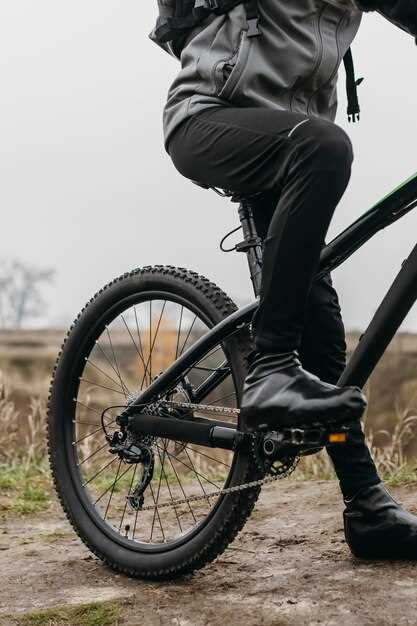

Choosing the right adventure bike is crucial for every rider, as it can significantly impact the overall experience on varied terrains. Among the most debated topics in the motorcycling community is the comparison between lightweight and heavy adventure bikes. Each category offers distinct advantages and disadvantages, making it essential for potential buyers to understand them before making a decision.
Lightweight adventure bikes are often celebrated for their agility and ease of handling. Weighing significantly less than their heavier counterparts, these bikes enable riders to maneuver with confidence in tricky conditions, such as tight trails or urban environments. The low weight often translates into better fuel efficiency and less physical strain on the rider during long journeys, making them an appealing option for those seeking an approachable bike that promotes exploration.
On the other hand, heavy adventure bikes provide unparalleled stability and comfort on the open road. Their bulkier build often comes with additional features, such as larger fuel tanks and advanced technology, catering to long-distance travel. Many riders appreciate the powerful performance and superior riding comfort that heavy bikes offer, especially during highway cruising or when loaded with gear for extended trips. However, the increased weight can pose challenges in off-road situations, potentially leading to difficulties in handling and control.
This article will delve deep into the pros and cons of both lightweight and heavy adventure bikes, offering insights into which option might be the best fit based on your riding style, preferences, and intended use. Understanding the specifics can help riders make an informed choice that enhances their two-wheeled adventures.
Handling and Maneuverability Comparisons

When it comes to handling and maneuverability, lightweight adventure bikes have a distinct advantage over their heavier counterparts. With lower overall weight and a more compact frame, lightweight bikes are often easier to control, especially in challenging off-road conditions. Riders can expect improved responsiveness, allowing for quick turns and adjustments during technical riding situations.
Lightweight bikes typically feature a shorter wheelbase, which enhances cornering ability and makes them more agile when navigating tight trails or city streets. This characteristic is particularly beneficial for new riders who may find managing a lighter bike less intimidating and more forgiving during sudden movements. Furthermore, long-distance journeys on lightweight models can be less physically taxing, contributing to better fuel efficiency and less fatigue over time.
Conversely, heavy adventure bikes provide stability and confidence at higher speeds, which can be advantageous on paved roads or when fully loaded for a long trip. Their heavier frame helps absorb bumps and uneven terrain, offering a smoother ride experience. However, this weight can hinder quick directional changes and make the bikes feel cumbersome in tight spaces or when traveling uphill on rocky trails.
In summary, the choice between lightweight and heavy adventure bikes directly impacts handling and maneuverability. Riders should consider their typical riding environments, experience levels, and personal preferences when selecting the appropriate bike style. Ultimately, lightweight bikes excel in agility and ease of handling, whereas heavy bikes favor stability and comfort during extended rides on varied terrains.
Long-Distance Comfort and Storage Options
When considering long-distance travel on two wheels, the choice between lightweight and heavy adventure bikes can significantly affect comfort and storage capacity. Lightweight bikes typically offer a more agile ride, making them easier to maneuver during long hours on challenging terrain. Their ergonomic designs often emphasize rider comfort, allowing for more natural riding positions that reduce fatigue over long distances.
However, heavy adventure bikes are typically equipped with features designed specifically for long-distance travel. These motorcycles usually come with larger, more comfortable seats, ample legroom, and advanced suspension systems that can absorb bumps and irregularities on the road. This level of comfort can make a substantial difference during extended journeys, particularly on uneven surfaces or highways.
In terms of storage options, heavy adventure bikes generally provide superior capacity. They often feature integrated panniers, top cases, and additional mounting points for luggage racks. This built-in storage allows riders to carry more gear, supplies, and camping equipment, making them ideal for extended trips across various terrains.
Lightweight bikes, while easier to handle, usually come with more limited storage capabilities. Riders may need to rely on aftermarket solutions or soft luggage options, which can compromise the overall packability and security of belongings during long trips. However, some lightweight models can still accommodate saddlebags or tank bags, offering a degree of flexibility and utility.
Ultimately, the right choice will depend on the rider’s priorities. Those valuing comfort and storage for long-distance travel may lean towards heavy adventure bikes, while riders seeking agility and ease of handling might prefer lightweight options, provided they can adequately manage the storage challenges.
Cost Considerations and Maintenance Needs

When evaluating lightweight and heavy adventure bikes, cost considerations play a crucial role in the decision-making process. Lightweight bikes typically have lower initial purchase prices, making them more accessible to budget-conscious riders. Their simpler designs often require fewer expensive components, which can translate to lower repair costs over time. Additionally, fuel efficiency is generally better with lighter models, leading to savings on long-distance travel.
On the other hand, heavy adventure bikes usually come with a higher price tag due to advanced features, enhanced durability, and sophisticated technology. These models often include powerful engines and premium materials designed for rugged conditions, which can significantly increase the upfront investment. However, their longevity may justify the expense, as they are built to withstand harsh environments, potentially reducing long-term replacements and upgrades.
Maintenance needs also differ considerably between lightweight and heavy adventure bikes. Lightweight bikes often require less frequent servicing due to simpler mechanical systems. Routine maintenance tasks like oil changes and brake replacements are usually straightforward and cost-effective. Conversely, heavy adventure bikes may necessitate specialized skills for repairs, leading to higher labor costs and longer wait times for parts. Additionally, the complexity of electronics and advanced suspension systems can increase maintenance frequency and costs.
Riders should also consider the availability of parts and service when choosing between these two categories. Lightweight models generally have a broader range of aftermarket parts available, making repairs more affordable and accessible. Heavy bikes, while they may have a dedicated technician base, can face challenges if specific parts are only available from manufacturers, sometimes leading to longer downtimes. Ultimately, understanding cost implications and maintenance needs is essential for making an informed choice between lightweight and heavy adventure bikes.






